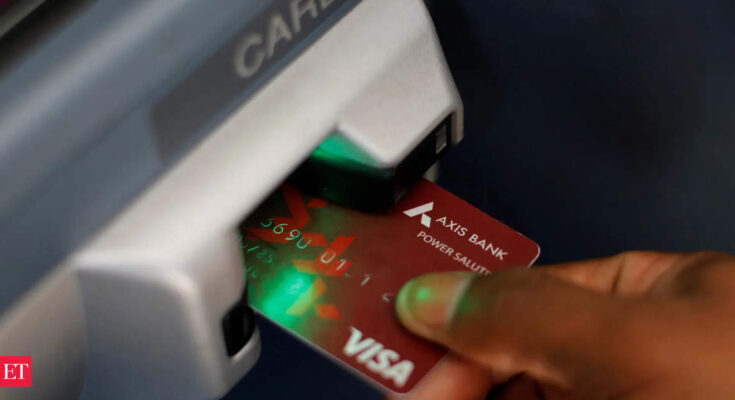Axis Bankwas the fourth largest issuer ofcredit cardsin the second quarter of FY25 after issuing 1.06 million new credit cards, the company reported in an exchange filing on Thursday. It held its position as a top player for credit cards for the 11th quarter in a row with a 14 per cent hike inCIF(Cards in Force) in Q2, the private lender reported.. The results are in tune with industry expectations ahead and amid the festive season this year, as credit-based expenditure was reported to have increased. Transactions were expected to rise by 35-50 per cent as compared to last year’s festive months, with a notable portion of payments made via credit cards, EMIs (equated monthly instalments), and pay-later options.. Additionally, industry insiders noted a marked rise in credit card usage in the lifestyle, fashion, and electronics sectors, which are driving the trend this year, ET had earlier reported.. “The use of credit cards has shown the highest growth, with 53% more transactions processed compared to the previous year. This demonstrates a notable increase in the use of credit cards,” Sheik Mohideen, executive vice president, Worldline India, a major deployer of point-of-sale terminals for banks had told ET.. Private lender Axis Bank reported a standalone net profit increase of 18%, reaching Rs 6,918 crore, compared to a profit after tax (PAT) of Rs 5,864 crore in the corresponding quarter of the previous financial year.. Credit goes up; debit goes down. Festive season or not, the number of credit cards in India overall is projected to reach 200 million, growing at a CAGR of 15 per cent, according to a PwC report. The report also highlights a significant rise in transactional activity for credit cards attributed to new product launches, innovative offerings, and a broader customer base.. Conversely, the report noted a decline in debit card usage. Both transaction volume and value for debit cards have fallen, indicating a shift in consumer preferences. In FY23-24, debit card transaction volume dropped by 33 per cent compared to the previous year, with spending decreasing by 18 per cent year-on-year.. Millennial money meltdown. The growth in credit card usage has led to a considerable problem for youngmillennialsas they are becoming increasingly aware of credit scores. Their enthusiasm for BNPL (buy now, pay later) schemes and e-commerce purchases is leading to a spike incredit card defaults, ET had earlier reported.. According to TransUnion Cibil data, credit card defaults rose to 1.8 per cent as of June 2024, up from 1.7 per cent six months earlier and 1.6 per cent in March 2023.. Though the percentage increase may appear minor, the total outstanding credit card dues saw a substantial jump. By June 2024, outstanding credit card debt reached nearly Rs 2.7 lakh crore, up from Rs 2.6 lakh crore in March 2024 and just over Rs 2 lakh crore in March 2023. To put this in perspective, before the pandemic, total outstanding credit card debt stood at Rs 87,686 crore in March 2019, reflecting a CAGR of 24 per cent over the past five years.. “Young millennials are using the entire limit and directly defaulting and turning into an NPA without even revolving the loan,” Suresh Ganapathy, research analyst with Macquarie, had said.. (You can now subscribe to our Economic Times WhatsApp channel)
